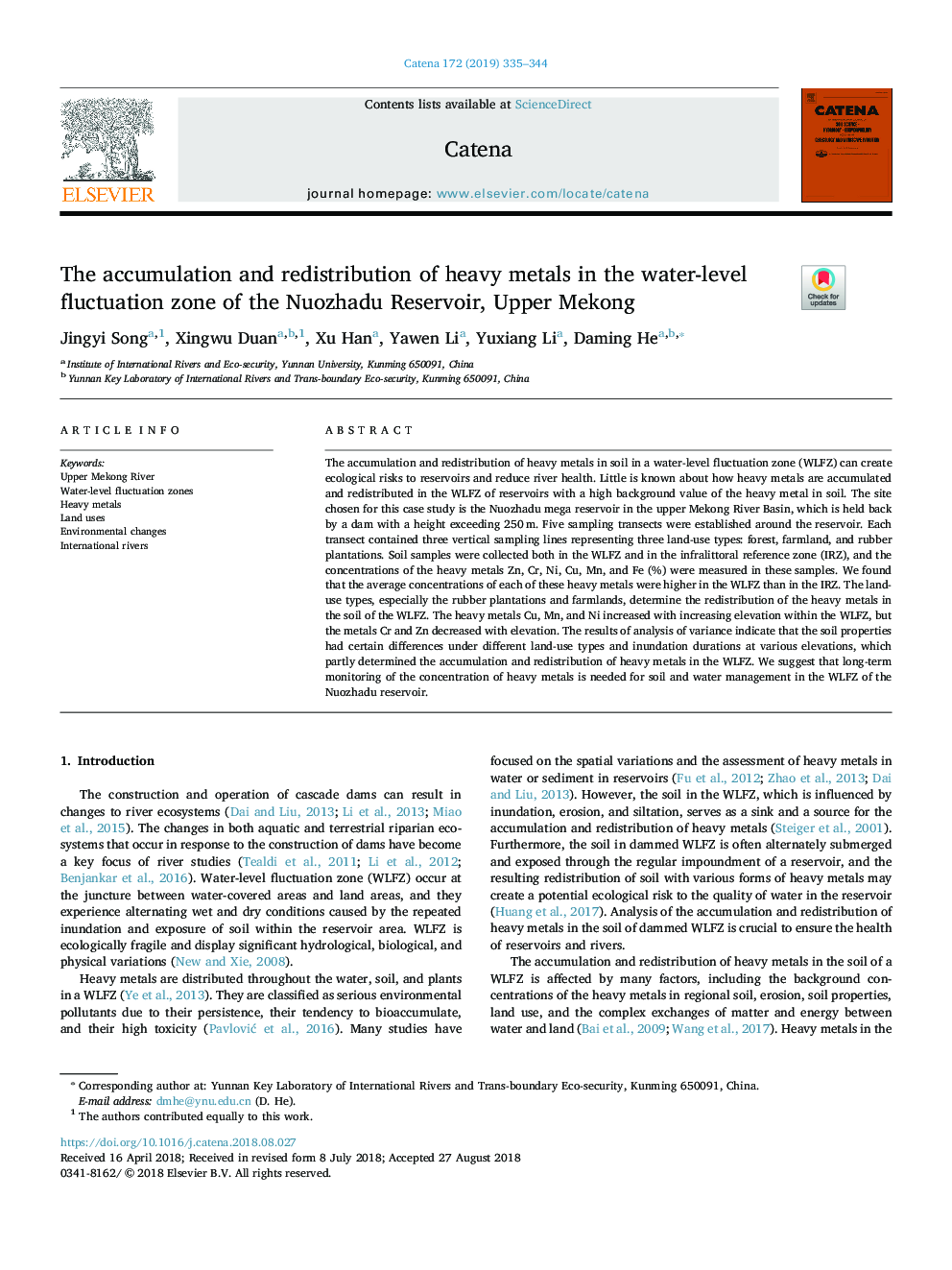| Article ID | Journal | Published Year | Pages | File Type |
|---|---|---|---|---|
| 10118189 | CATENA | 2019 | 10 Pages |
Abstract
The accumulation and redistribution of heavy metals in soil in a water-level fluctuation zone (WLFZ) can create ecological risks to reservoirs and reduce river health. Little is known about how heavy metals are accumulated and redistributed in the WLFZ of reservoirs with a high background value of the heavy metal in soil. The site chosen for this case study is the Nuozhadu mega reservoir in the upper Mekong River Basin, which is held back by a dam with a height exceeding 250â¯m. Five sampling transects were established around the reservoir. Each transect contained three vertical sampling lines representing three land-use types: forest, farmland, and rubber plantations. Soil samples were collected both in the WLFZ and in the infralittoral reference zone (IRZ), and the concentrations of the heavy metals Zn, Cr, Ni, Cu, Mn, and Fe (%) were measured in these samples. We found that the average concentrations of each of these heavy metals were higher in the WLFZ than in the IRZ. The land-use types, especially the rubber plantations and farmlands, determine the redistribution of the heavy metals in the soil of the WLFZ. The heavy metals Cu, Mn, and Ni increased with increasing elevation within the WLFZ, but the metals Cr and Zn decreased with elevation. The results of analysis of variance indicate that the soil properties had certain differences under different land-use types and inundation durations at various elevations, which partly determined the accumulation and redistribution of heavy metals in the WLFZ. We suggest that long-term monitoring of the concentration of heavy metals is needed for soil and water management in the WLFZ of the Nuozhadu reservoir.
Related Topics
Physical Sciences and Engineering
Earth and Planetary Sciences
Earth-Surface Processes
Authors
Jingyi Song, Xingwu Duan, Xu Han, Yawen Li, Yuxiang Li, Daming He,
